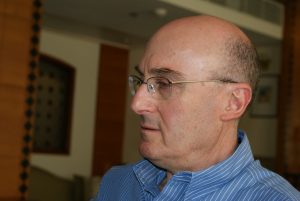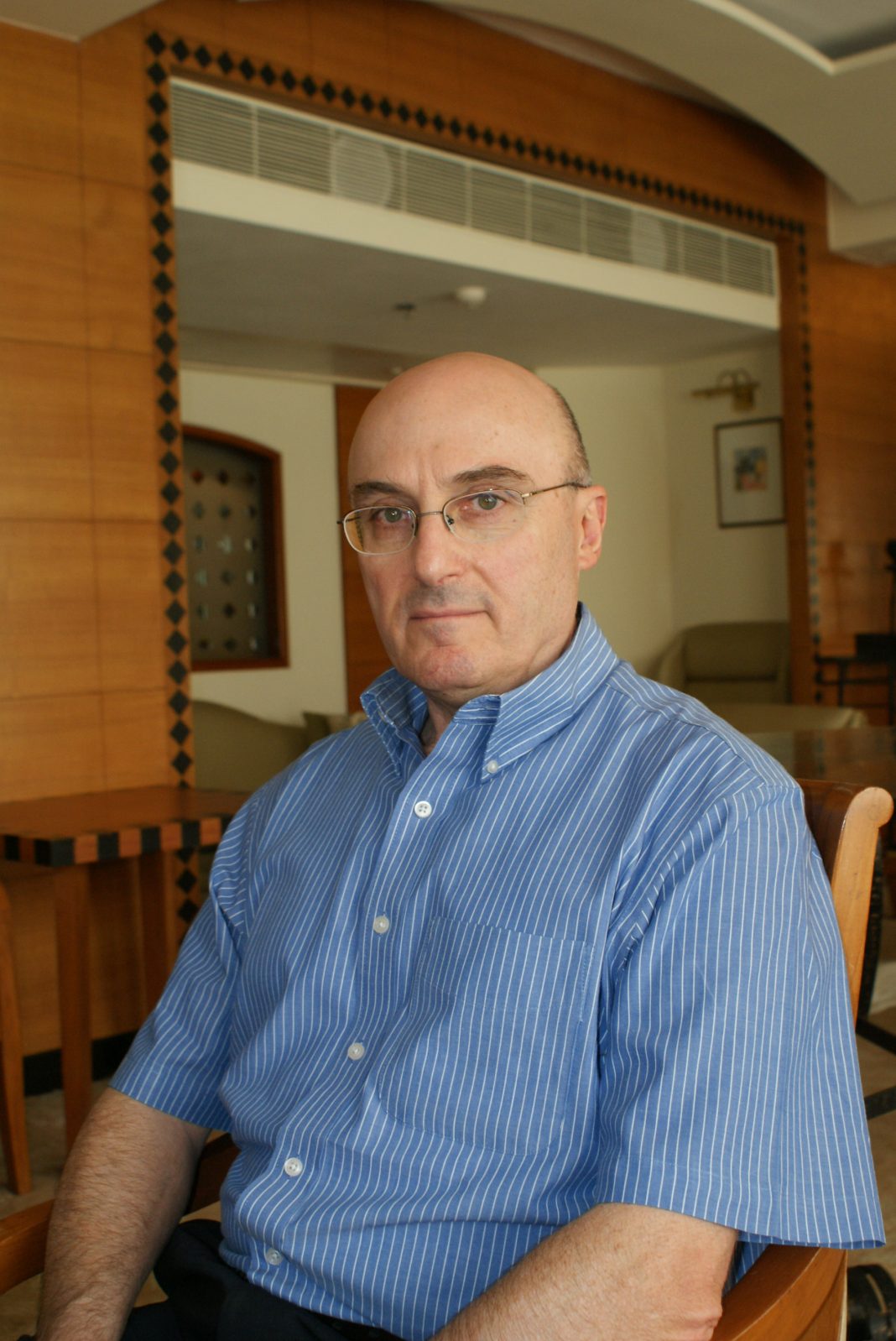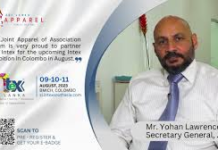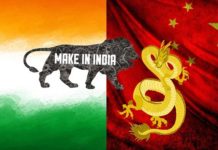https://www.dnaindia.com/business/interview-israel-s-micro-irrigation-king-seeks-crown-in-india-1411575
RN Bhaskar — Jul 19, 2010
Interview: Igal Aisenberg, Netafim
We are #1 in the world, and hope to be that in India too . . .

Igal Aisenberg is president and ceo of Netafim, the world’s largest micro-irrigation company which is also credited with introducing drip irrigation to the world i9n addition to many other innovations in Ragricultural practices. He was passing through India, and agreed to speak with DNA’s R.N.Bhaskar in Vadodara. Eisenberg has been with Netafim for over 17 years, and has watched the way it has grown over the years.
Given below are edited excerpts from that interview.
DNA: Let us begin with your role in the world, and your role in India. Globally you are the largest in the business of micro-irrigation, but in India it is Jain Irrigation that is the largest? How do you view this situation?
AISENBERG: True Jain Irrigation is our biggest competitor in India. And we respect this company as a major competitor. But you must remember one thing. Unlike us, it is a local player, and has opportunities to enter into several agri-related businesses, which may not be our focus area.
We see ourselves as a multinational company focused exclusively on micro-irrigation for now. We see this happening globally, where local players get into related areas of business as well, which we choose not to include under Netafim’s umbrella.
For instance, Netafim’s owners own significant farms and farming businesses. But Netafim will not get into farming itself. Our business is to help farmers, not to get into fields that farmers invariably get into, whether it is in purchase or sale of agricultural produce or processing farm produce or even engaging in farming ourselves. We believe we should be focused on selling our expertise and our products, and in educating, and helping farmers.
To understand this you must look to our origins.
We were born out of three kibbutzes (Israelli community or co-operative farms) coming together to develop the concepts of an Israeli engineer, Simcha Blass, who discovered the essence of drip irrigation. He turned to the kibbutz for support, and Netafim was born in 1965, combining the manufacturing capabilities, experience and agricultural knowledge of the kibbutz. , Netafim’s initial production facility – the first of its kind worldwide – was established in 1965, and we have led the way ever since.
Netafim’s highly qualified engineers improved the original model to develop the world’s first online dripper and then other techniques and methods to improve irrigation, and agricultural productivity. Then came other companies which followed the lead provided by Netafim. Buty Netafim has always remained the global opinion leader, and our ability to remain the biggest – and we think the best – is also because our focus and dedication to this business. That is why we have succeeded in selling our products and services in more than 110 countries.
For us agriculture is almost akin to a religion and a faith. Sustainability is what underscores our past, present and future. Our company and products were born out of a true necessity and basic understanding of the importance of using our resources wisely. Originating in a part of the world where water resources are scarce, Netafim is dedicated to conservation and sustainable productivity.
DNA: Jain Irrigation’s success lies in integrating its micro-irrigation business with contract farming as well. This reduces two risks of the farmer – the risk of growing crops even when rains fail and ensuring that his yields are good, and the other risk of finding a market for his goods. Jain Irrigation has tried to minimize this risk for small farmers, especially in the field of onions, and maybe soon in mangoes, by agreeing to buy back his produce a year in advance. Will you also do the same?
AISENBERG: We too work towards minimizing the risk of farmers – first by ensuring that they can get a better crop even under the harshest of conditions, and then in pointing them to marketing linkages that we can offer thanks to our international spread. We do not market agricultural produce ourselves.
DNA: What are your new plans for India
AISENBERG: We are already in the process of setting up one more manufacturing unit in India, and plan to set up a third unit in this country very soon. We are working towards encouraging mechanization of cotton farming which can be extremely labour intensive and even cumbersome. At the same time, we are also working towards improving the knowledge base of farmers with the aim to further improve good agricultural practices on the one hand, and continue improving agricultural productivity on the other.
We are also looking at greenhouses, but are watching this sector very closely because the investment in greenhouses requires higher prices for the items produced in these greenhouses. Many greenhouses have focused on flowers which are exported at attractive prices. But when it comes to horticulture – fruits and vegetables – investments in greenhouses can only be justified through the sale of high-value exquisite table varieties. But for this, one needs more reefers, temperature controlled warehouses, and the growth of a market which wants to pay high prices for such exquisite items. This will require more organized large-scale retail outlets to be set up. We think this could take 3-5 years more.
DNA: And how do you view the US market?
AISENBERG: The US remains one of our biggest markets and also the biggest research centres. This is where much of our initial research is done. And this is where we have some of our best knowledge resources. One example of the significant role we play can be seen from the way the US government paid us to bring to these centres some 50 farmers from Afghanistan where we educated them on good agricultural practices and taught them how to grow cash crops which could offer them a better yield than those offered by growing opium. These farmers have now gone back to Afghanistan to train other farmers.
Unlike our initial years where we thought that one did not have to be a marketing person to sell drip and micro-irrigation systems, we have discovered the critical need to invest in knowledge resources. In fact, we take pride in the role we have played in raising the bar for the entire industry.
That is why we value strong competition, as a major competitor is compelled to invest in educating the farmers to sell their technology and services. If there is no major competitor, we shall be compelled to bear the entire expenditure on educating and growing the market. With more competition, this work is shared by our competitors, and the market tends to grow faster. Thi s is what happened in the US as well, when three of our – relatively smaller – competitors joined hands to merge into John Deere Water, which became a bigger competitor. Today this company also invests in expanding the knowledge pool of agriculture.
Eventually, customers come to us because of the quality of our goods and services – which is best confirmed by their willingness to pay higher prices that we charge for them. It is a slow process, and a demanding one. But we have become the biggest player in the world, and have no doubt that this will be repeated in India as well.
DNA: What is the philosophy that drives Netafim?
AISENBERG: We approach the entire gamut of agriculture with the awareness that this sector requires the interplay of three factors – earth water and energy. If we leave energy out – because that is a different business altogether – we see agriculture largely as the effective use of both earth and water. Energy is saved too, but that is incidental.
Unlike many in the world, we do not see water as being too much of a problem because it can be saved, captured and re-used. At the same time, we believe that water can be got through other means – whether through groundwater sources or through desalination. But earth, as we know it today, is finite. Unless we take farming to the moon, we have limited land. Thus we have to work on ways to produce more crops from the same acre of land, using water optimally; which usually turns out to be significantly less than used conventionally. The focus is more on increasing productivity and preventing environmental degradation by utilizing the existing resources more effectively.
Our technology brings in the best use of land and water.
DNA: Who are the best water managers in the world?
AISENBERG: In our opinion, there are only two countries that have learnt how to re-use water, and thus minimize wastage of water. One is Israel, a pioneer in this field. The other is Spain. Many other countries need to look at this very closely.
As far as using water from desalination of water is concerned, Israel has been one of the early players in this field. But so have most countries in the Middle East. And while most desalination plants have produced water through desalination at a cost of US $ 1 per cubic meter of water (a little less than 5 paise a litre), newer technologies have permitted this cost to come to under half a dollar per cubic litre. We believe that these costs will go down further.
And while general perception has it that 70% of the available fresh-water is used for agriculture, it must be remembered that this 70% is a deceptive figure. It refers to water that can be captured, and not water that has not been captured either from the atmosphere, or the earth or even from the sea.
In fact, Israel has decided to set up many more desalination plants in the near future to reduce its dependence on rain water. The plan is that we should be able to meet all our water requirements through natural resources and through desalination plants within the next three years.
We in Israel, and more particularly at Netafim, believe that we understand how to use water more effectively than most other countries.
DNA: How has Netafim changed over the years?
AISENBERG: When Netafim was formed in 1965 we saw the invention of drip irrigation as the ideal solution for lands that were starved of water. We thought that Netafim’s business was essentially for regions that were dry and arid.
Today, we have shown to the world that we have technologies that can be used even in areas which are not deficit in water supply. We have shown how effective and reduced water supply even in flood crops like sugarcane and rice can actually increase the yields of these crops using the same acreage. As I mentioned earlier, we have introduced methods which bring out an effective use of both land and water.
In the process, we have studied crop diseases in different regions of the world, different climatic conditions, using different types of soil. We have studied crop diseases and have educated farmers on best farming practices and crop management techniques. It is this knowledge along with the attendant extension services we offer, with the additional benefit of technology that have combined to make us the largest micro-irrigation company in the world.
DNA: How big is the market for micro-irrigation?
AISENBERG: To understand how big the market is, one must first arrive at a consensus on what are the definitions of items that must be included in this business. There are players that go beyond the ambit of micro-irrigation, and include those products and businesses when they talk about micro-irrigation. But, most players believe that this business – defined as low volume drip and micro-irrigation — is worth around US$1.5 billion annually across the entire world. Then there is mechanized irrigation business which is estimated at US$ 1 billion annually. There is a third segment as well – landscape irrigation – comprising water fountains and the like, which is estimated at US$600 million to $700 million annually.
DNA: Last year was a bad one for your company. Would you like to comment on it?
AISENBERG: When the financial meltdown took place in 2008, we knew that 2009 would be a bad year. But we were not prepared for the depth of the downturn – that was unpredictable. We were prepared for a 10-12% downturn, but finally had to cope with a slump of over 20%. Our global revenues fell from US$605 million in 2008 to US$505 million in 209. The good news was that Nethafim’s efficiency and profits from emerging markets, including India, offset the decline in revenues. Our profits were thus much higher than in previous years.
DNA: What were your profits?
AISENBERG: (smiles) We do not disclose our numbers beyond our topline figures. We are a private company, and we do not disclose these numbers.
DNA: How do you view India?
AISENBERG: We see ourselves as opinion leaders in India. We see ourselves playing a critical role in helping Indian farmers in productivity enhancement and assisting India’s government and its people in formulating policies that aid agriculture.
For instance, we have been working with the Directorate of Rice Research (DRR) and the Indian Agricultural Research Institute (IARI) in Tamil Nadu and Andhra Pradesh for the past four years in conducting field trials to show that rice yields can be improved by at least 40% using new techniques involving drip irrigation. Once these tests are replicated in different regions of the country, the government will actually begin encouraging this method of cultivation.
We started our operations in India in 1980, first in partnership with another Indian company, and then as a wholly owned subsidiary of Netafim in 2001.
Today, we are present in almost all agri-markets in India with market-shares of 15% to 40% , giving us an average market share of 20% in the country. We are confident of becoming the biggest player in Indian markets as well within the next three years.
Our confidence is based on our track record in this country – we have grown 10 times – though on a very small base to start with – during the past five years, and have achieved a market share of 20%. We have already invested over $7 million in this country and have very aggressive plans for the future.








































COMMENTS